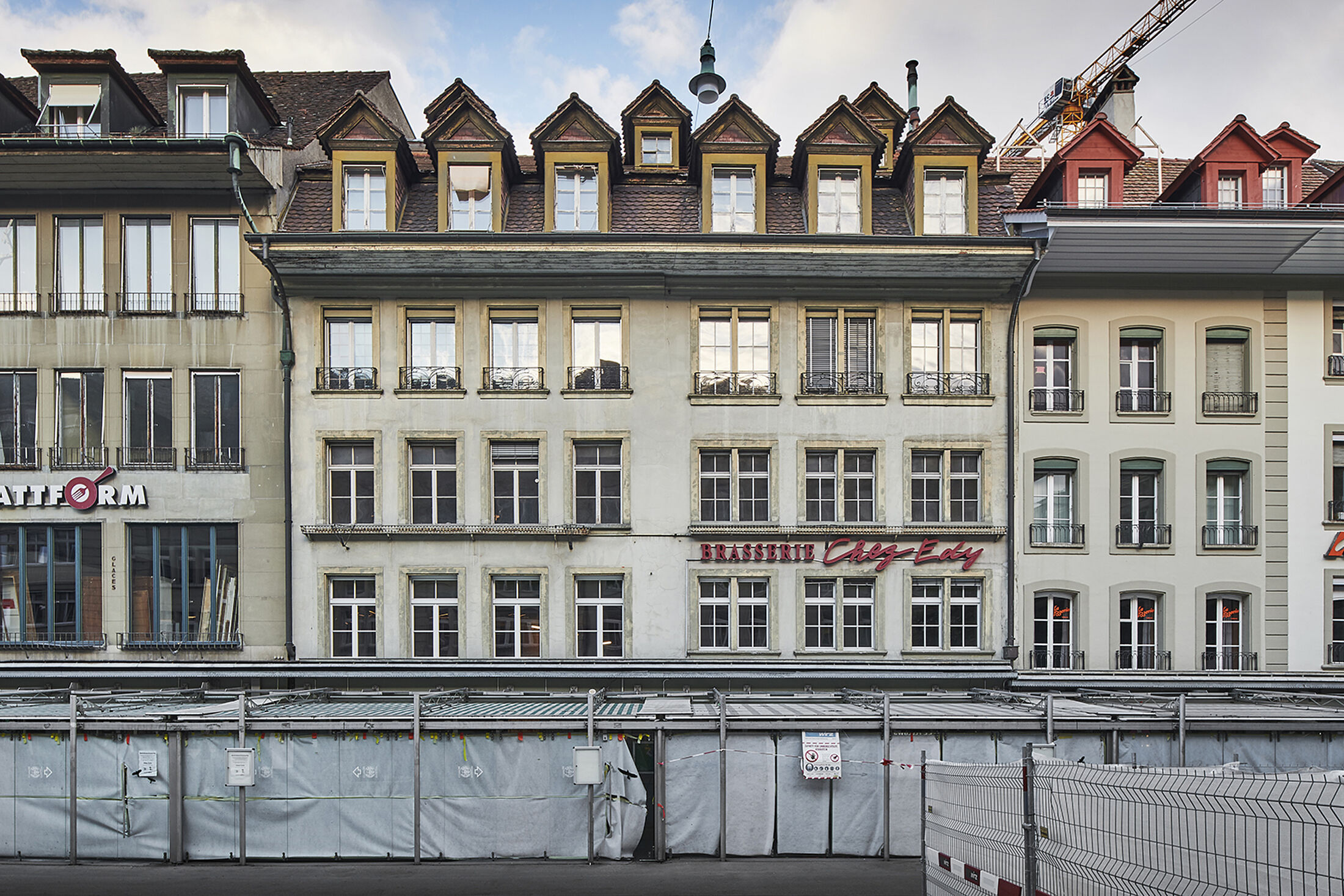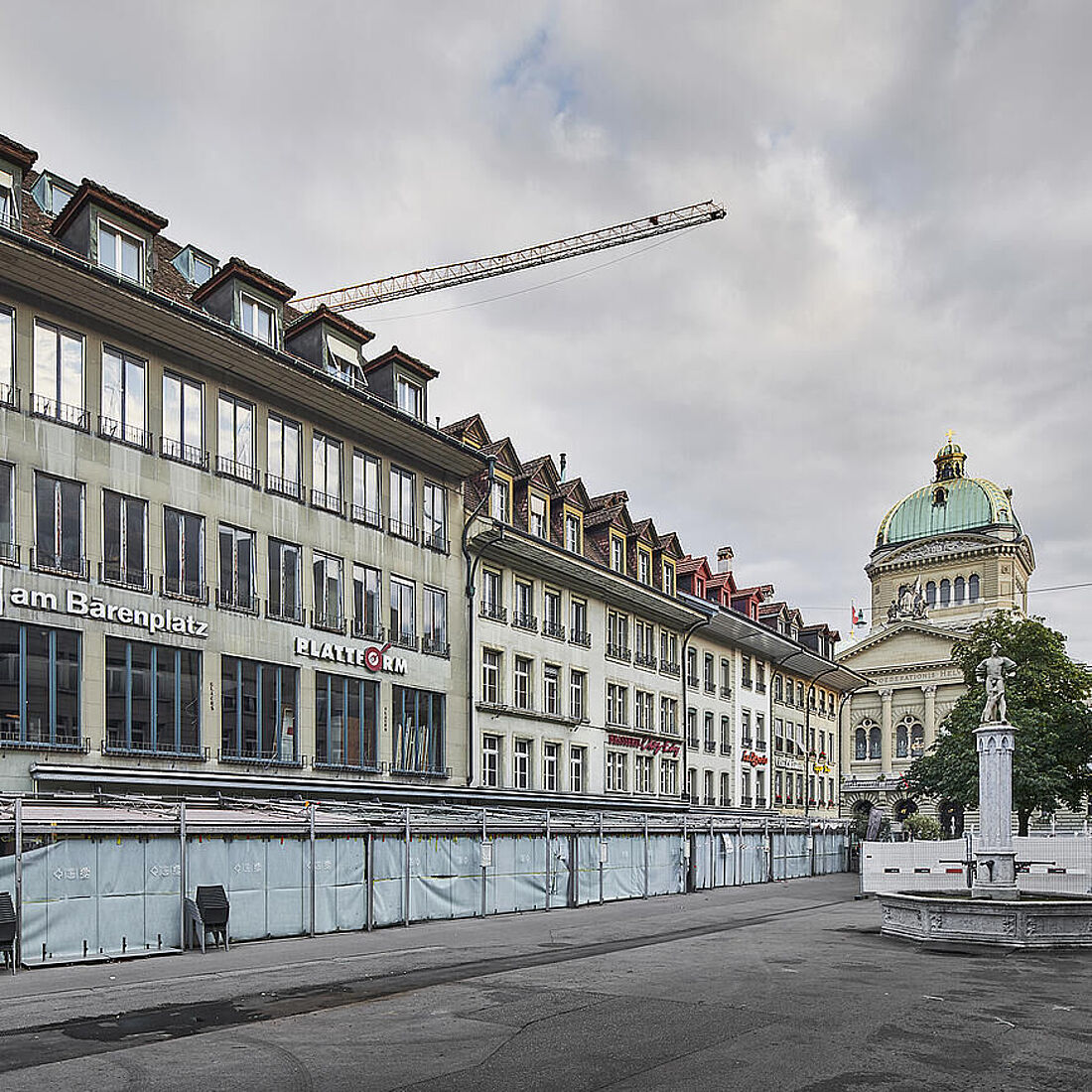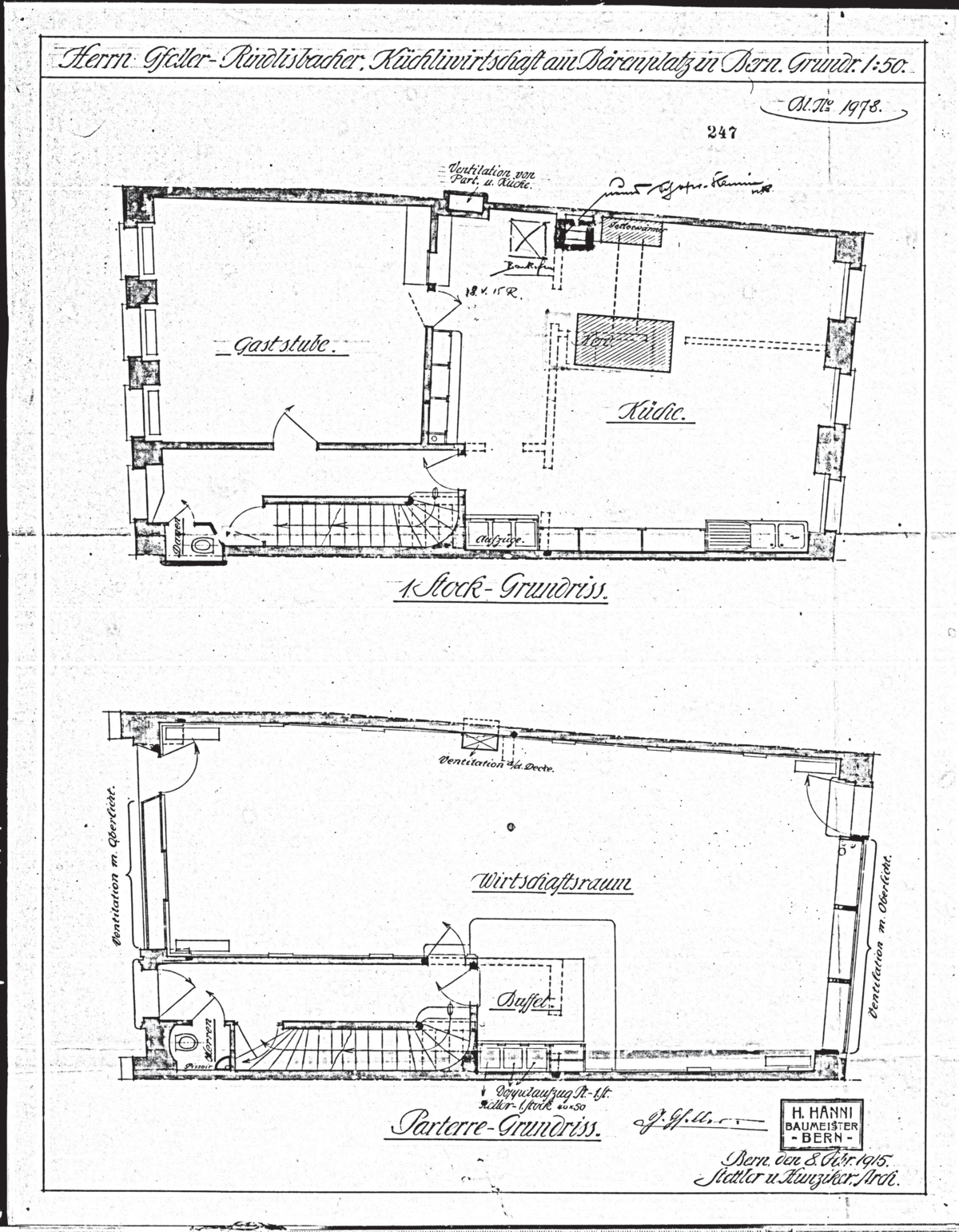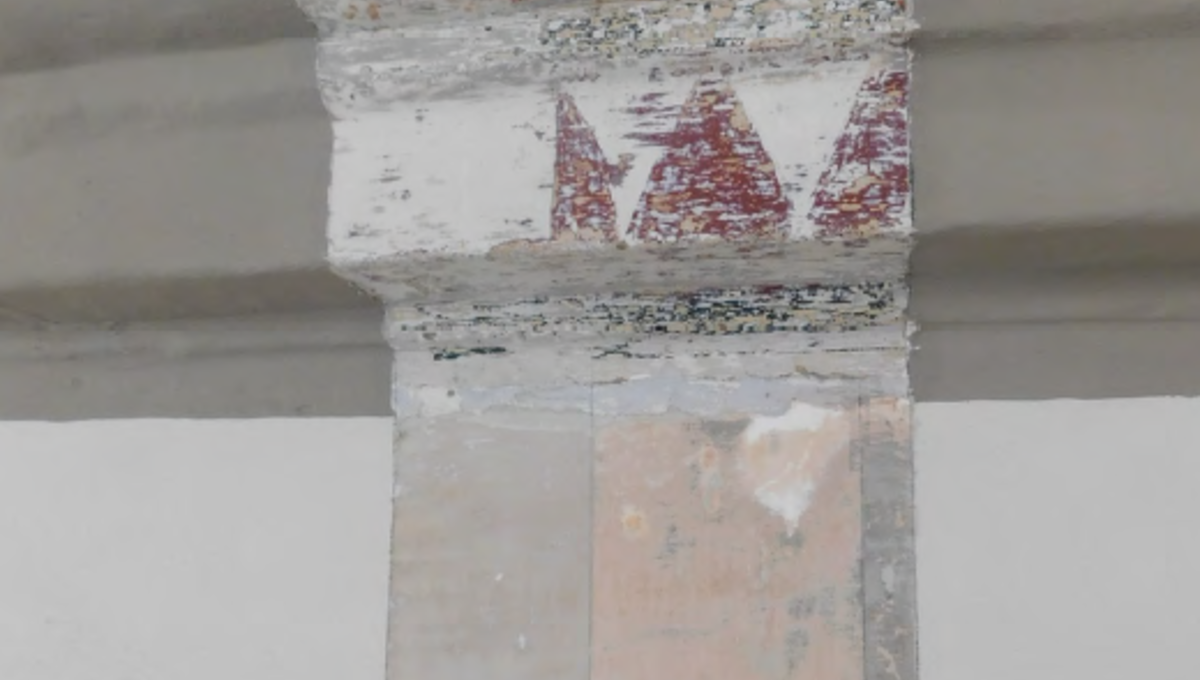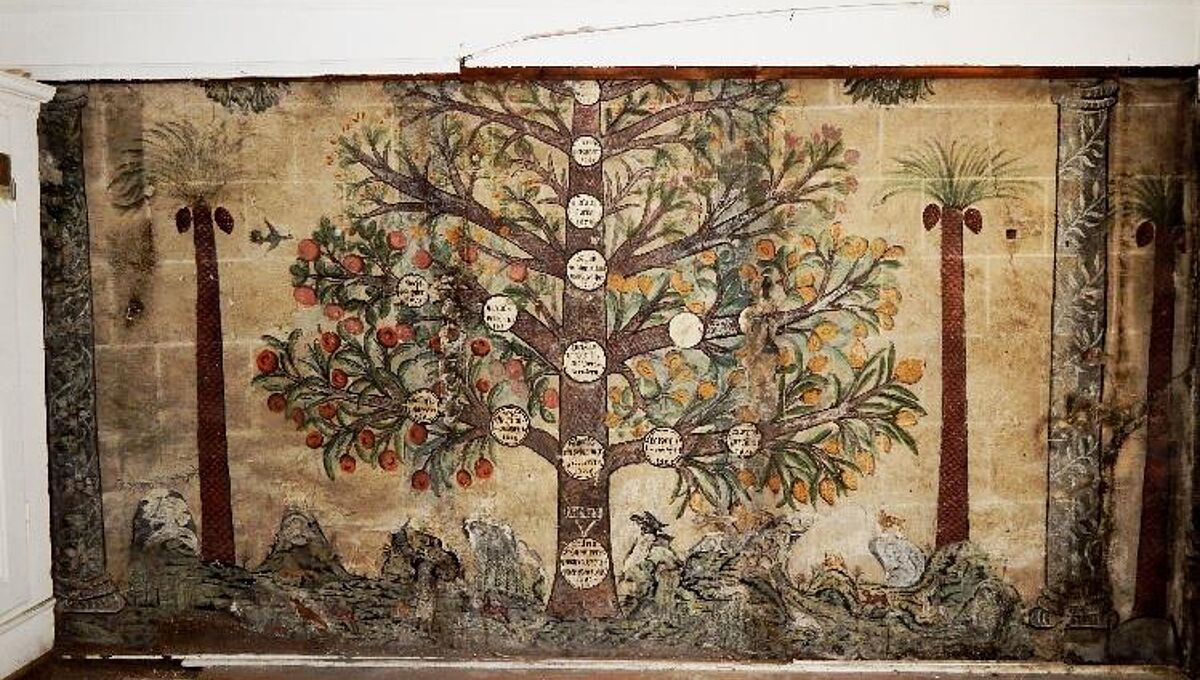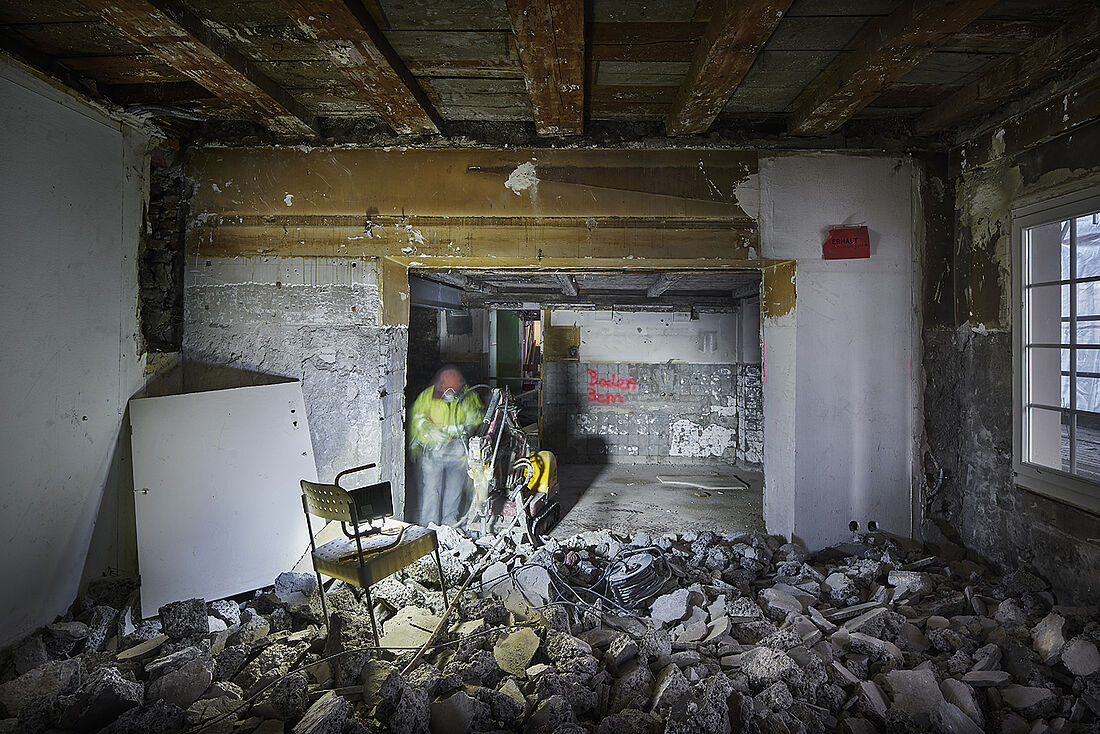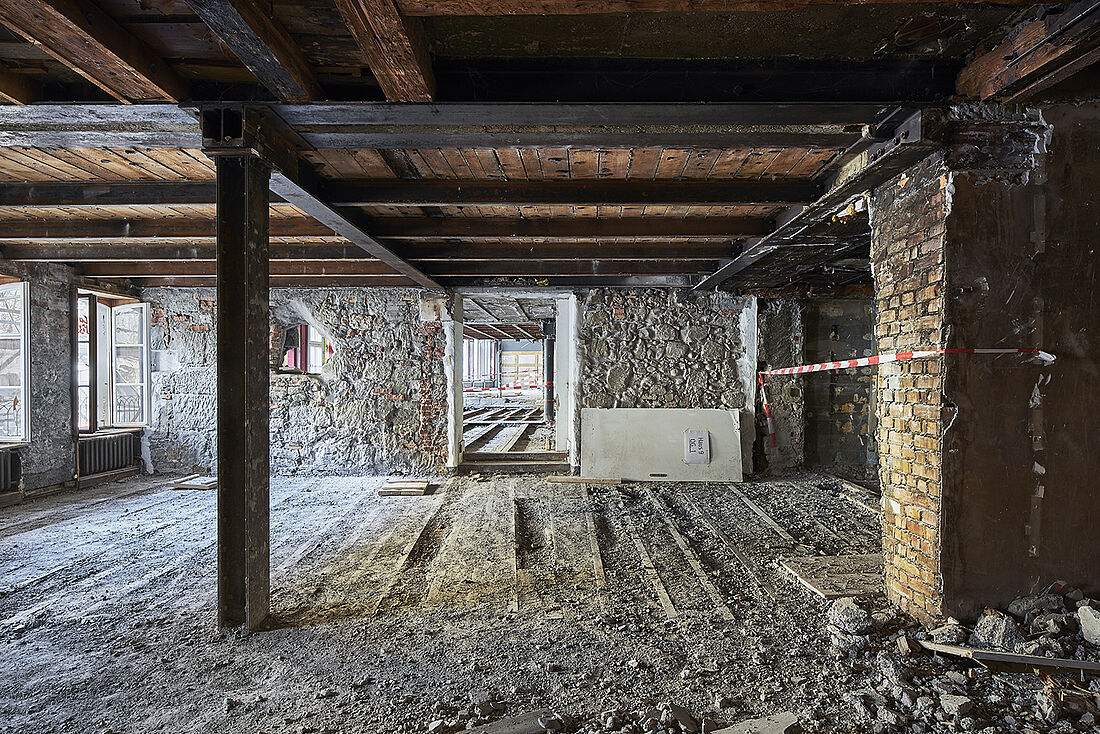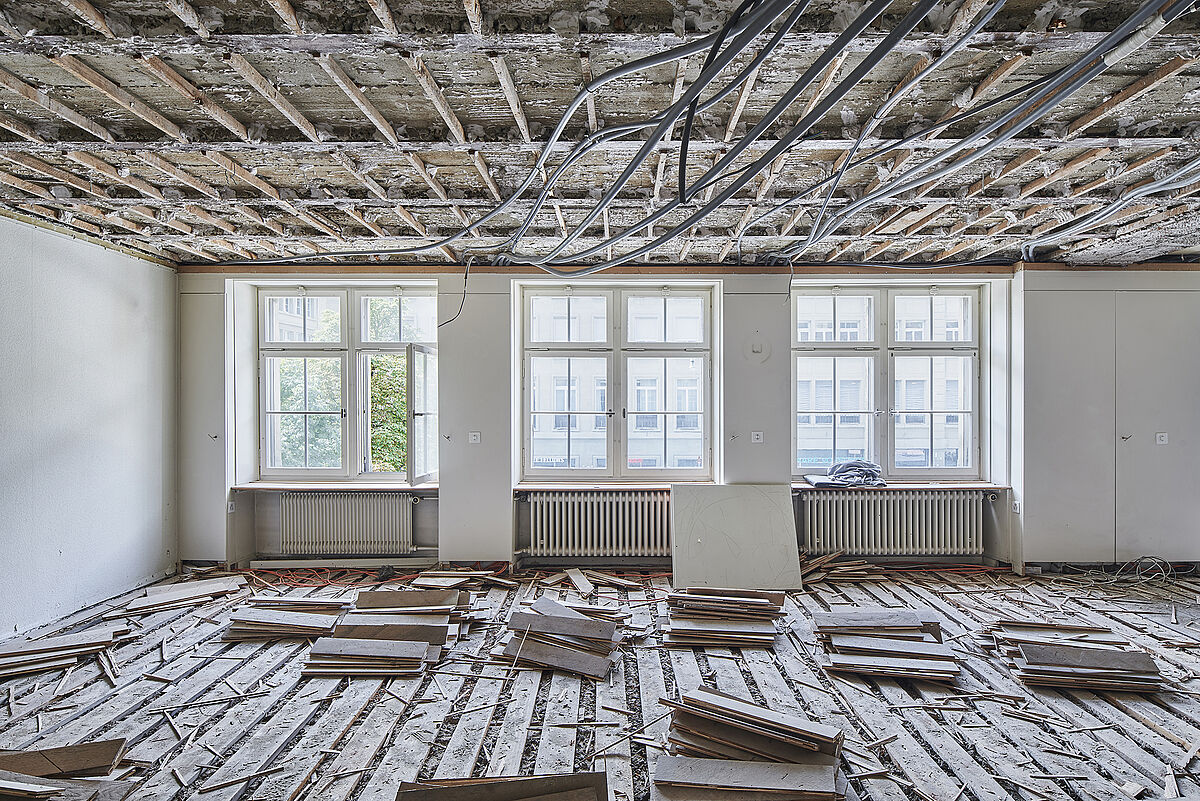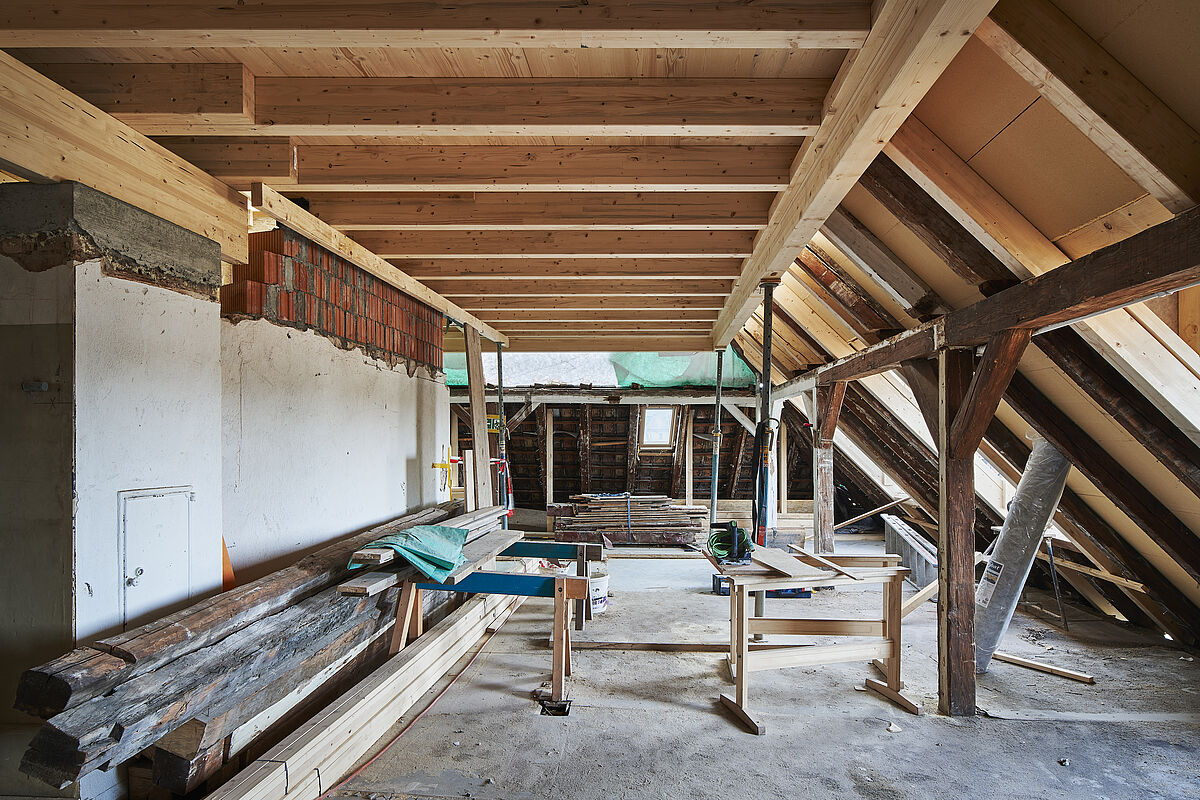We are currently renovating several listed buildings in Bern; the three houses on Bärenplatz and the former Hotel Metropole on Waisenhausplatz. Both conversion projects should be completed by mid-2022 at the latest. Can you walk me through the process?
Whenever you renovate a building, you analyse the location and the market as well as the building and consider what you want to preserve for a suitable concept of utilisation. For a building worthy of protection, the heritage agency is involved from the very beginning, and the process works a little differently in every city. For Bärenplatz, we agreed to commission a historian to carry out the building history analysis.
